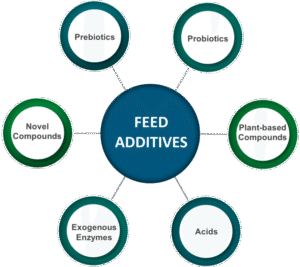The purpose of ration formulation is to provide an animal of nutrients for maintenance and (desired) production. A balanced ration formulates proportions and quantities of nutrients to properly nourish an animal for 24 hours. The economic context is an extra dimension. Decision making is necessary to aim for maximum economic benefit, maximum physical production, or possibly both considering social aspects, such as milk supply for certain target groups or employment. To approach least-cost ration formulation:
1.Calculate the total nutrient requirements of the animals
2.Determine available ingredients (feedstuffs) and their nutrient contents: These depend on the local situation and the season. Determine what is possible to feed during winter. A balance is required between energy containing foodstuffs and products with high protein content.
3.Develop a basic ration of roughage and possibly some concentrates to meet requirements for maintenance and some milk production (5-8 kg): First roughage intake capacity must be fulfilled. If feedstuffs are analyzed, it is possible to calculate the feeding value. There might be a shortage in protein.
Basic ration often does not fulfils the feed requirement for all production: Extra concentrates are needed. Consider the required ratio energy: protein, and compose an adequate concentrate.
4.Match first 3 steps in the formulation, so that ingredients (quality and quantities) fulfil the animals nutrient requirements;
5.Match first 3 steps at “least-cost” ration formulation
7.1 Conditions and Limitations for Ration Formulation
Thank you for reading. Don't forget to subscribe & share!
Some conditions and limitations have to be considered for the ration formulation. The main aspects to take into account are:
1.Dry Matter Intake (DMI) Minimum Roughage Intake
2.Required Amount of Energy (FUM) Protein Requirement
3.Limiting Aspects of Certain Feedstuffs Availability
4.Mineral and Vitamin Requirements Selectivity (refusal) and Waste









